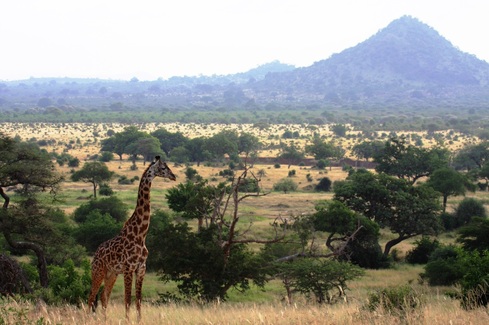|
Giraffes fascinate adults and children the world over. But this gentle and iconic animal is not only special in itself, it also indicates the health of African savanna ecosystems, home to the greatest diversity of large mammals and the most spectacular displays of wildlife in the world. Humans evolved in the African savanna and these landscapes hold a special place in our hearts. But savanna ecosystems are in serious trouble - agriculture, deforestation, illegal hunting, and disease are decimating wildlife populations. Giraffe numbers have declined by one-third in the last decade alone. Through the Environmental Studies Program at Dartmouth College, we are studying giraffe in the Tarangire-Manyara Ecosystem using a special tool: state-of-the-art computer-assisted photographic identification to follow individuals throughout their lifetimes, without ever laying a hand on them. Traditional capturing and marking of animals for identification purposes is traumatic and expensive, but our methods are a fraction of the cost and have no negative effect on the animals. So how does it work? Every giraffe's fur pattern is unique to that individual. We use a computer program called WildID, developed by software engineers at Dartmouth College, which can rapidly sort through thousands of our photographs to tell us which of the patterns we have previously seen. By "capturing" the animals on film during one survey, "marking" them in our computer database as an individual with a unique pattern, and "recapturing" them on film the next time we survey - and by recording the GPS location of each giraffe when we take its photograph - we can track hundreds of individuals to see where they move, whether a female has a calf, and how long the calves and adults live. Below is a sample of photographs that we input into the WildID program. The program uses algorithms to match patterns with each other, so we know whether two different photographs are the same animal. Notice the wide variety of fur patterns - and how beautiful they are! Using information about survival, reproduction, and movements from our photographic database, we can learn how differences in vegetation, predation, disease, and human activities are affecting giraffe populations in the Tarangire-Manyara Ecosystem. Unlike the nearby Serengeti, large parts of the Tarangire-Manyara Ecosystem are not protected. Our long-term goal is to use our information to provide effective conservation measures to ensure the future of wild giraffes and all the creatures of the savanna.
0 Comments
Your comment will be posted after it is approved.
Leave a Reply. |
Science News and Updates From the Field from Wild Nature Institute.
All Photos on This Blog are Available as Frame-worthy Prints to Thank Our Generous Donors.
Email Us for Details of this Offer. Archives
July 2024
|
|
Mailing Address:
Wild Nature Institute PO Box 44 Weaverville, NC 28787 Phone: +1 415 763 0348 Email: [email protected] |
|



 RSS Feed
RSS Feed
